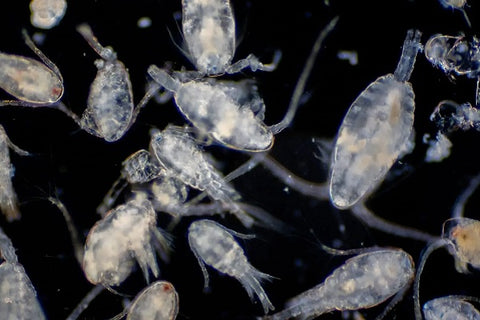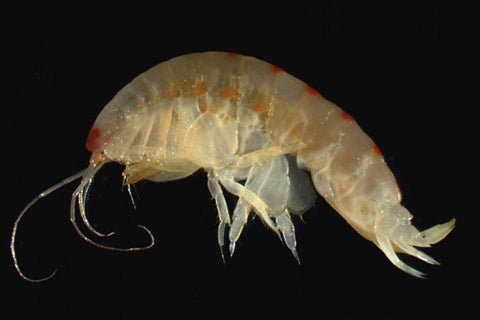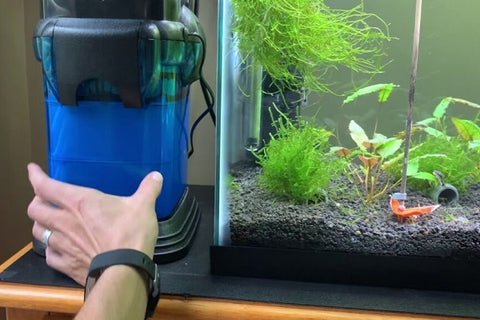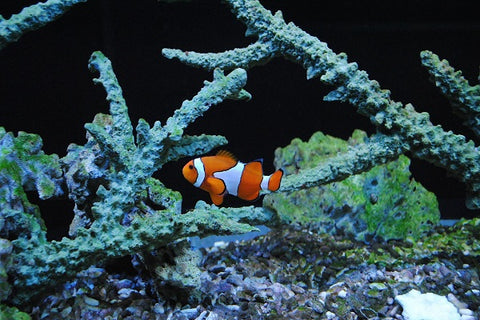Nowadays, more and more people choose to put an aquarium in their homes or office, which can enhance the aesthetic looking, reduce stress and decorate their living and workspace. But sometimes, we will find a lot of tiny white bugs in the aquarium, which is annoying and not in line with our expectations.
So what are they? Are they harmful to fish? If they are, how to get rid of them? If they aren’t, how to reproduce them? This article will help you figure out the answers to these questions. Just follow us and keep reading.
What are these white bugs in the aquarium?
First, let’s find out what are they.
They are pods that can be found in both freshwater and saltwater aquariums, but mostly in saltwater aquariums.
If you can notice them with your naked eyes, they are not fully mature. The adult pods will stay in the substrate or rocks in your fish tank and you can never see them. However, the larvae and juvenile pods will swim freely and stay on the grass.
When there are a great number of them adhering to the grass, you’ll find what we called tiny white bugs.
Are pods harmful to fish in the aquarium?
Having known what they are, you may want to know are they harmful to the fish.
There are multiple types of pods in the world, and the good news is that most of them are harmless to your fish. You don’t have to worry that they will hurt your fish, bring parasite infection or pollute the water. On the contrary, they are beneficial in fish-keeping.
- They can help reduce the debris, such as uneaten food in your fish tank since they are fed on them.
- They can also help clean the algae in your fish tank. You may don’t believe such a tiny creature can eat algae, but when they reproduce and gather together, they will be good algae cleaners.
- The most important benefit is that they are food for some fish. Unlike the food you feed to your fish, these tiny animals are snacks for them.
You may wonder how about the minority harmful types? Don’t worry, those harmful ones are not common in a fish tank, you may never find them in your aquarium.
Types of pods in a fish tank
As we mentioned before, there are various pods in the world. And today, I’m gonna introduce 2 types of them to you, which are commonly found in an aquarium.
1. Copepods
Copepods are the most common pods in the aquarium. They are also food for most inhabitants in your tank, such as mandarin dragonets, clownfish, wrasses and cherry shrimp. When they are fully mature, they can reach a size of 2mm to 10mm, which are very tiny and suitable to serve as snacks.

2. Amphipods
Do not mix them with prawns although these two look similar. Amphipods can grow up to 10mm and are good food for fish that like meat, such as wrasses. Adding these pods to your aquarium can help reduce algae and waste in your tank, and also remove the nitrates in the water.

How to remove and get rid of pods in a fish tank?
Although beneficial to fish-keeping, these tiny white bugs do influence the appearance of the aquarium. So how do remove them and get rid of them?
Use a canister filter
You should clean the filter media regularly since the pods might adhere to the media. If you don’t rinse them from the media, your filter might be clogged and won’t work efficiently.

Introduce predators
As we mentioned, pods can be food for some creatures in your tank. Therefore, you can also introduce some fish that eat pods to your tank. The fish that you can choose from are as follows:
- Mandarin
- Wrasse
- Goby
- Seahorse
- Clownfish
- Firefish
- Shrimp

Do not overfeed your fish
Overfeeding causes problems such as more waste, swim bladder disease and poor water quality. To less produce food for pods to grow, you should avoid overfeeding.
Thoroughly clean your fish tank
Pods live by the waste in your tank. If you can keep your tank clean, you don’t have to worry that they will overproduce. A filter is not enough for a mass of pods in your tank. And fish are not able to eat them up quickly. Thus, the most effective way is to clean your fish tank, especially the substrate and rocks, which are the shelters for pods.
How to create pods for your fish?
We have grasped some ways to remove the pods in a fish tank, but what should we do if we need more pods? Don’t worry, there is a complete guide for you to create pods for your fish.
- Make sure your fish tank is well cycled before you start.
- Prepare a container for the pods. A platform, bucket, or a tiny tank is enough.
- Use a filter to keep the water quality and provide them with a growth environment.
- Use an air stone to keep a moderate water flow.
- Provide sufficient light for them. Normally, 12-16 hours of light every day is enough.
- Keep the water temperature at around 77℉ to offer a suitable environment for them.
- Feed them with phytoplankton, rotifers or detritus to them.
- After a few days, you can harvest them and move them to the tank, and they will reproduce here.
They are more likely to reproduce and hide in the substrate or rocks. Therefore, don’t forget to buy and add some to your fish tank so that the pods can safely reproduce.
Conclusion
Now you have known what are the tiny white bugs in your tank. Next time when you notice them, do not get panic. It’s a sign that your fish tank has much waste and needs a cleaning.
Considering that they are not harmful but beneficial to your fish, you don’t have to remove them from your aquarium. But if you can’t bear them, in this article, you can get some ways to remove them easily. If you don’t mind, just leave them alone and enjoy the changes they make.
However, you can not ignore the reason behind it. When they show up in your aquarium, think about what you’ve done recently. Didn’t you overfeed your fish? Have you done a water change and tank cleaning regularly? Did you forget to check the equipment? If you find the real cause, take some measures to improve the situation and provide your fish with a clean and healthy living environment.


Comments (0)
Back to Beginner Guide & Advice